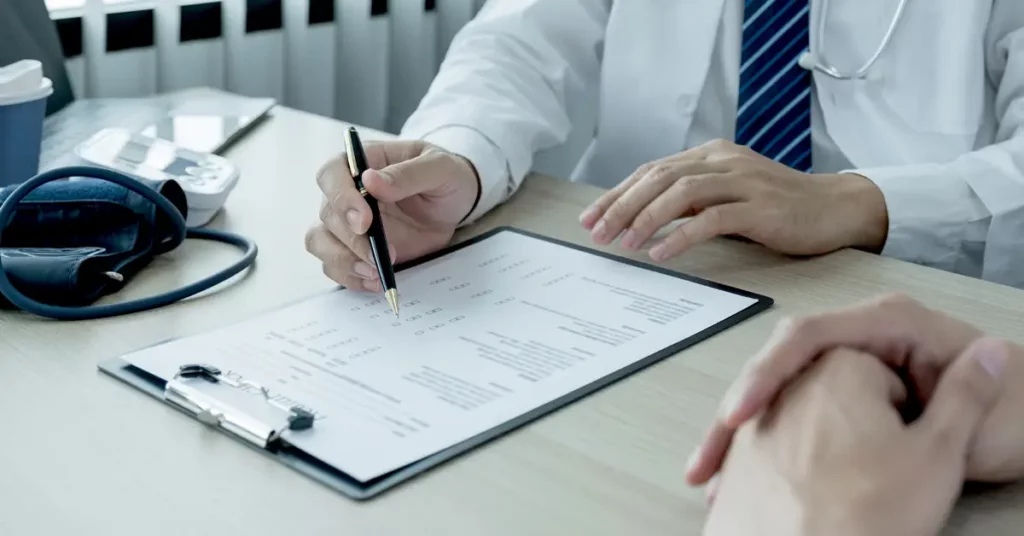It is important to understand the difference between subjective and objective data when it comes to monitoring patient health. Objective data refers to measurable, quantifiable information such as blood pressure and heart rate. Subjective data, on the other hand, is information that comes from the patient themselves, such as their pain level or symptoms. Understanding the difference between these two types of data is crucial for healthcare providers, as it allows them to have a more comprehensive view of a patient’s health and make more informed decisions about treatment plans.
Remote Patient Monitoring (RPM) technology allows healthcare providers to track both objective and subjective data remotely, without the need for in-person visits. This can be especially beneficial for patients with chronic conditions, such as diabetes or heart disease, who may require frequent monitoring.
The Importance of Tracking Objective and Subjective Patient Data
When it comes to monitoring patient health, it’s important to track both objective and subjective patient data. Objective data refers to measurable, quantifiable information such as blood pressure and heart rate. Subjective data, on the other hand, is information that comes from the patient themselves, such as their pain level or symptoms.
Combining both types of data can provide a more comprehensive view of a patient’s health, allowing healthcare providers to make more informed decisions about treatment plans. For example, tracking a patient’s blood pressure and heart rate alongside their reported symptoms can help a healthcare provider identify patterns and potential issues that may not have been apparent with just objective data alone.
Understanding Subjective Data
Subjective data refers to information that comes from the patient themselves, such as their symptoms, pain levels, or overall health status. This type of data is often based on the patient’s perception and cannot be measured or quantified objectively. Examples of subjective data include patient-reported symptoms, pain scales, and quality of life assessments. This type of data is important for healthcare providers because it can provide insight into a patient’s overall well-being and can help identify patterns or potential issues that may not be apparent with objective data alone.
In order to gather this type of information, healthcare providers can ask patients to describe their symptoms and their experience, and conduct subjective assessments to evaluate their overall health status. It is important to note that subjective data is not always accurate, and it can be influenced by a patient’s bias or perception of their condition. Despite this, it is important to include subjective data in the patient’s overall data to get a more comprehensive view of the patient’s health.
Understanding Objective Data
Objective data refers to measurable, quantifiable information such as blood pressure, heart rate, and lab results. This type of data can be observed and recorded without bias, making it reliable and verifiable.
Examples of objective data include vital signs, lab results, and diagnostic imaging. This type of data is important for healthcare providers because it can provide a clear and accurate picture of a patient’s physical health.
While objective data is important, it does not provide the full picture of a patient’s health. It is important to combine objective data with subjective data to get a more comprehensive view of the patient’s overall health status.
By considering both objective and subjective data, healthcare providers can make more informed decisions about treatment plans and improve patient outcomes.
How RPM Can Help
RPM technology allows healthcare providers to track both objective and subjective patient data remotely, without the need for in-person visits. This can be especially beneficial for patients with chronic conditions, such as diabetes or heart disease, who may require frequent monitoring.
With RPM, patients can use devices such as blood pressure cuffs or glucometers to collect objective data, and then transmit the data to their healthcare provider via a secure connection. Patients can also communicate subjective data, such as symptoms or pain levels, through a patient portal or mobile app. This integration of technology into nursing practice allows for more efficient and accurate tracking of patient health, as well as more frequent communication between patients and healthcare providers.
Additionally, RPM allows healthcare providers to interpret patient data more effectively, as they have access to both subjective and objective data. This leads to more informed treatment decisions and ultimately, improved patient outcomes.
Leveraging Objective and Subjective Data for Improved Patient Outcomes: DrKumo’s Remote Patient Monitoring Solution
At DrKumo, we understand the importance of tracking both objective and subjective patient data in order to make informed decisions about treatment plans. That’s why our RPM uses both types of data to provide both patients and healthcare providers with the tools they need to effectively manage chronic conditions and improve patient outcomes.
Our RPM technology is highly scalable, continuous, and real-time, providing healthcare providers with real-time intelligence for timely intervention. This allows for better management of chronic conditions, improved self-monitoring, and increased engagement in their own healthcare for patients. Additionally, DrKumo’s RPM solution is user-friendly and HIPAA-compliant, with a mobile-enabled interface, making it easy for patients to manage their health conditions in the comfort of their homes.
Our solution is powered by an AI/ML engine, which allows to analyze the data and extract insights that can be used to improve treatment plans and identify potential issues before they become critical.
At DrKumo, we’re committed to providing the most effective solutions for remote patient monitoring, and we’re confident that our RPM technology can help improve patient outcomes and drive cost savings for healthcare providers.
Takeaway
RPM technology is an effective tool for healthcare providers to track both objective and subjective patient data, making it easier to make informed decisions about treatment plans. With the ability to monitor patients remotely and improve the management of chronic conditions, utilizing RPM can lead to better patient outcomes, increased patient engagement, and cost savings for healthcare providers.
If you’re interested in learning more about how DrKumo can help you implement RPM technology and improve patient outcomes, contact us.









